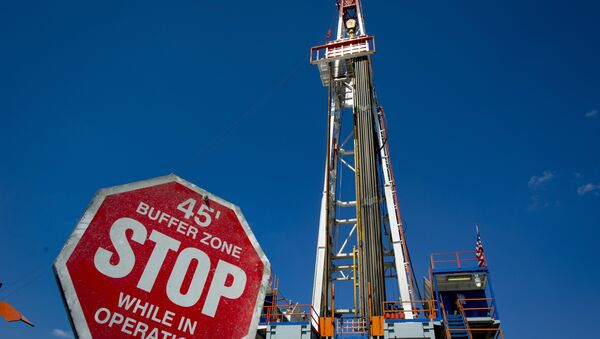According to the IAE's latest forecast, US oil production will continue its growth this year, driven largely by the country's ongoing shale oil boom. According to IAE analysts, US growth will take place against a background of stabilizing oil prices, which recently hit their highest level in over three years. Ultimately, the Paris-based organization says high US output will remain possible so long as "OPEC and non-OPEC [price] restraints remain in place."
In an analysis of these ambitious estimates, Igor Naumov, financial observer with Russia's RIA Novosti news agency, wrote that while US capacity for growth is undeniably strong, such growth may very well be the US oil industry's own worst enemy.
The goal of at turning the US into an energy superpower, set about five years ago, is not new, Naumov noted. Until the late 1940s, the US already accounted for upwards of 60% of global oil production.
Washington's efforts to restore this status faced considerable setbacks following the sharp drop in oil prices over the past three years, which imposed severe limitations on investment into the massive shale oil fields in states such as North Dakota. The decline is based in the simple fact that while shale requires a price of $50-60 a barrel to break even, traditional production in countries such as Russia or Saudi Arabia requires prices of just $10-15 per barrel, depending on the field.
"Therefore, it was not surprising that beginning in the second half of 2014, when oil prices began to fall, and ending in mid-January 2016, when they reached their absolute low (the price of the OPEC basket dropped to $24.74 p/b), nearly a third of the US's shale oil producers were on the verge of bankruptcy," Naumov wrote.
Catch-22?
With the US Energy Ministry confirming recently that the country's shale oil production has seen steady growth in 2017, and projecting that this growth will continue into 2018, many observers believe that the US's own production may very well be the source of the next price drop.
"Washington, not bound by any obligations within the framework of the OPEC+ deal, concluded between leading oil-producing countries. including Russia, is using that situation to its advantage," Naumov noted.
"This is the effect of the free rider," Russian National Energy Security Fund director Konstantin Simonov explained. According to the analyst, it can't be ruled out that the US output will precipitate a downward trend, gradually rolling prices back to the shale critical benchmark of $50.

"The answer, it's possible, may be contained in the report of the International Monetary Fund presented at the Davos forum," the observer wrote. The IMF predicts an average of 11.7% growth in oil prices, to $59.90 p/b for 2018, followed by a 4.3% drop the following year, a trend it expects to continue over the next five years.
Moscow, however, remains more confident on prices remaining stable, the journalist noted. Speaking in Davos on Wednesday, Russian Energy Minister Alexander Novak said there was no reason to be concerned about shale. "Shale will not solve all problems. Yes, in the short-term perspective it will cover a growth in consumption, but it will not cover the entire increase," the minister said.
In other words, while a US jump in output at near break-even prices may play a role in dampening prices over the short term, their long-term effect will be likely only to hasten the depletion of US deposits.





